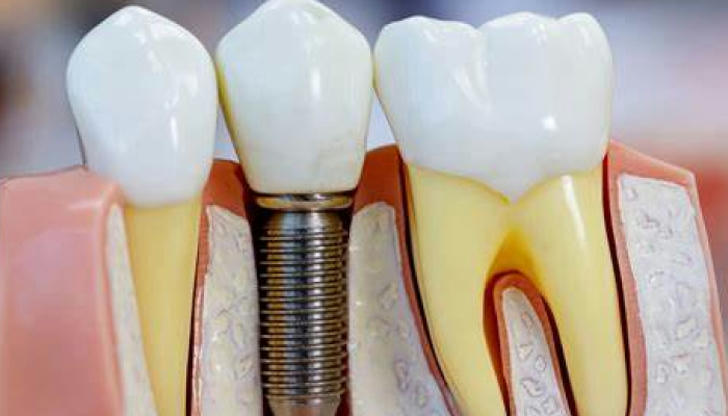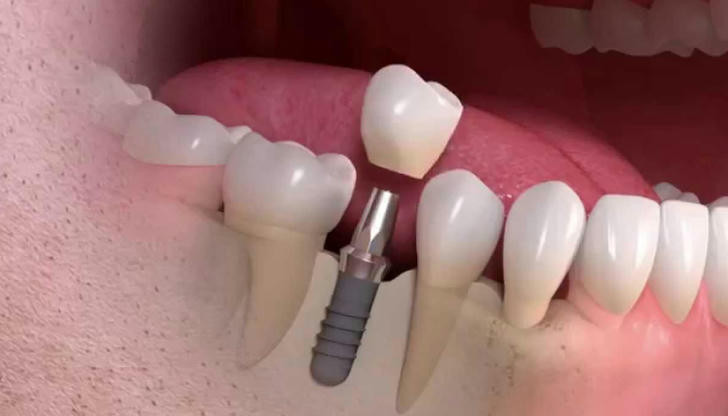The Modern Development of Dental Implants

Dental implants have revolutionized the field of dentistry, offering a permanent and reliable solution for individuals who have lost teeth due to injury, disease, or decay. These advanced medical devices have significantly improved the quality of life for millions of people worldwide, restoring their ability to speak, eat, and smile with confidence. Over the past few decades, the development of dental implants has evolved rapidly, with continuous advancements in materials, techniques, and technology. As a result, dental implants have become the gold standard for tooth replacement, surpassing traditional solutions like dentures and bridges. This essay explores the modern development of dental implants, including the history, advancements in technology and materials, the procedure itself, and the future of dental implantology.
History of Dental Implants
The concept of dental implants is not as modern as many might think. In fact, the idea of replacing missing teeth with artificial materials dates back thousands of years. Ancient civilizations such as the Egyptians and the Maya experimented with rudimentary forms of dental implants. Archaeological evidence has shown that the Egyptians used seashells and ivory to replace missing teeth, while the Maya used carved stones to place in the jaws of the deceased. However, the true breakthrough in dental implants came in 1952 when a Swedish orthopedic surgeon named Per-Ingvar Brånemark discovered the process of osseointegration—the ability of bone to fuse with titanium. Brånemark was conducting experiments with titanium in the field of orthopedic surgery when he realized that the material naturally bonded with bone. This discovery laid the foundation for the development of modern dental implants. In the decades that followed, dental implants evolved from experimental procedures to a highly successful and widely adopted solution for tooth loss. Brånemark’s research and his collaboration with other dentists led to the development of the first titanium dental implants in the 1960s, and by the 1980s, dental implants were gaining mainstream acceptance.
Advancements in Materials
One of the most significant developments in dental implantology has been the improvement in materials used for implant construction. The introduction of titanium as a material for dental implants was a game-changer. Titanium is biocompatible, meaning that it is not rejected by the body and can fuse with the bone without causing adverse reactions. This made titanium the ideal material for dental implants, providing a secure and durable foundation for artificial teeth. In recent years, advancements in titanium alloys and ceramic materials have further enhanced the quality of dental implants. Titanium alloys are often used for their superior strength, while zirconia implants have become increasingly popular due to their aesthetic appeal. Zirconia, a white, ceramic material, mimics the natural color of teeth, making it a preferred choice for implants in the front of the mouth. Zirconia implants are also non-corrosive and have a high resistance to wear and fracture, offering long-term reliability and durability. Additionally, the surface treatment of dental implants has improved dramatically. Early implants had smooth surfaces, which made it difficult for bone to fully integrate with the implant. Today, implants are treated with roughened surfaces, coatings, and plasma-sprayed titanium to encourage faster osseointegration. These advancements allow for more predictable and successful outcomes, reducing the risk of implant failure.
Technological Advancements in Implant Placement

In addition to advancements in materials, technological innovations have drastically improved the precision and efficiency of dental implant placement. Modern dentistry has embraced the use of computer-aided design (CAD) and computer-aided manufacturing (CAM) technology to create custom implants and prostheses that fit precisely into the patient's mouth. 3D imaging and cone beam computed tomography (CBCT) have revolutionized the planning phase of implant procedures. These technologies provide detailed, high-resolution images of the jawbone and surrounding structures, allowing for more accurate assessments of bone density and the identification of any potential complications. With 3D imaging, dentists can visualize the patient’s oral anatomy in three dimensions, enabling them to plan the placement of implants with greater precision. Another significant technological advancement is the use of robot-assisted surgery. Robotic systems, such as the Yomi system, can assist dentists in placing implants with unprecedented accuracy. These systems use real-time data from 3D scans and CAD models to guide the surgical process, reducing human error and enhancing the overall success rate of dental implant procedures. Robotic assistance also allows for minimally invasive techniques, which can reduce recovery time and improve patient outcomes.
The Dental Implant Procedure

The procedure for placing dental implants has also evolved over the years. While traditional implants required multiple surgical stages, the modern approach is often less invasive and more efficient. The procedure typically involves the following steps:
- Consultation and Planning The first step is a thorough consultation with the dentist, who will evaluate the patient’s oral health and determine if they are a suitable candidate for dental implants. The dentist will take digital X-rays or 3D scans of the jawbone to assess the bone density and ensure there is enough bone to support the implant. If the patient has insufficient bone density, bone grafting may be necessary before proceeding with the implant. Bone grafts can be obtained from the patient’s own body, a donor, or synthetic materials. Once the dentist has confirmed that the patient has adequate bone structure, the implant placement can proceed.
- Implant Placement During the implant surgery, the dentist will make a small incision in the gums to expose the jawbone. A hole is then drilled into the bone, and the titanium implant is inserted. In some cases, the implant may be placed in a single procedure, while in others, it may require multiple stages to allow the bone to heal and integrate with the implant.
- Osseointegration After the implant is placed, the patient must wait for the bone to fuse with the implant in a process known as osseointegration. This typically takes several months, during which time the patient may wear a temporary prosthesis. Once the implant has fully integrated with the bone, a permanent crown, bridge, or denture is attached to the implant.
- Final Restoration Once osseointegration is complete, the dentist will attach a custom-made prosthesis to the implant. The prosthesis is designed to match the natural shape, size, and color of the patient’s teeth. The result is a durable and aesthetically pleasing solution that functions like a natural tooth.
Advantages of Dental Implants
Dental implants offer numerous advantages over traditional tooth replacement methods such as dentures and bridges. Some of the key benefits include:
- Durability and Longevity Dental implants are designed to last a lifetime with proper care. Unlike dentures, which may need to be replaced or adjusted over time, dental implants provide a permanent solution for tooth loss. The titanium material used in implants is incredibly strong and resistant to wear, ensuring long-term reliability.
- Improved Functionality Dental implants function just like natural teeth, allowing patients to eat, speak, and smile with confidence. Implants are firmly anchored in the jawbone, providing a stable foundation for prosthetic teeth that do not slip or shift, as dentures sometimes do.
- Aesthetic Appeal Because dental implants are designed to mimic the appearance of natural teeth, they provide an aesthetically pleasing solution for individuals with missing teeth. Implants are custom-made to match the color and shape of surrounding teeth, resulting in a seamless and natural look.
- Preservation of Bone Structure One of the key advantages of dental implants is their ability to preserve the jawbone. When a tooth is lost, the underlying bone can begin to deteriorate over time. Dental implants help to stimulate the bone, preventing bone loss and maintaining the structure of the face.
The Future of Dental Implants
The future of dental implants looks promising, with continued advancements on the horizon. As technology continues to evolve, dental implants will become even more precise, efficient, and accessible. Some of the emerging trends in dental implantology include:
- Digital Implants The integration of digital technologies into the design and placement of implants will continue to improve the precision and speed of dental implant procedures. With advancements in 3D printing, dentists will be able to create customized implants and prostheses more quickly and affordably.
- Tissue Engineering Tissue engineering is an exciting field that holds promise for enhancing the success of dental implants. Researchers are exploring ways to regenerate lost bone and gum tissue, making it easier to place implants in patients who have insufficient bone structure.
- Immediate Implants Recent advancements in implant techniques have made it possible to place implants immediately after a tooth extraction in some cases. This approach, known as immediate loading, can reduce the overall treatment time and improve patient satisfaction.

Conclusion
Dental implants have come a long way since their inception, evolving into a highly effective and reliable solution for tooth replacement. With advancements in materials, technology, and surgical techniques, dental implants have become the preferred choice for individuals seeking to restore their smile and improve their quality of life. As the field of dental implantology continues to advance, patients can expect even more personalized, efficient, and aesthetically pleasing outcomes. Ultimately, the modern development of dental implants represents a significant milestone in dental care, offering lasting benefits to millions of people worldwide.
